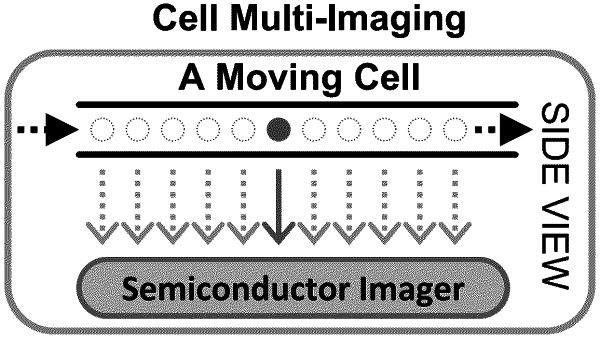| CPC G01N 21/4788 (2013.01) [B01L 3/502715 (2013.01); G06T 17/00 (2013.01); G01N 2201/061 (2013.01)] | 19 Claims |

|
1. A method for determining a location of a cell surface marker on a surface of a cell, the method comprising:
a. subjecting the cell to flow through a channel;
b. while the cell is flowing through the channel, exposing the cell to a plurality of diffracted beams generated by diffracting a light from one or more excitation sources using a light diffractive system, wherein upon exposure of the cell to the plurality of diffracted beams, a plurality of photons is emitted from the cell, wherein the light diffractive system comprises a diffractive photonic circuit that causes the light from the one or more excitation sources to diffract into the plurality of diffracted beams that exposes a plurality of spatially separate locations along the channel, thereby exciting the cell M times in one pass of the flowing cell through the channel, wherein an excitation of the cell emits a photon of the plurality of photons;
c. using a single-photon avalanche diode (SPAD) array disposed in proximity to the channel to detect the plurality of photons; and
d. processing the plurality of photons detected in (c) to generate a topographic map of the surface of the cell comprising the location of the cell surface marker,
wherein the SPAD array comprises a plurality of SPADs disposed adjacent to the plurality of spatially separate locations along the channel, and
wherein the cell enters the channel and iterates through the channel for at least N iterations, thereby generating N*M number of photons.
|